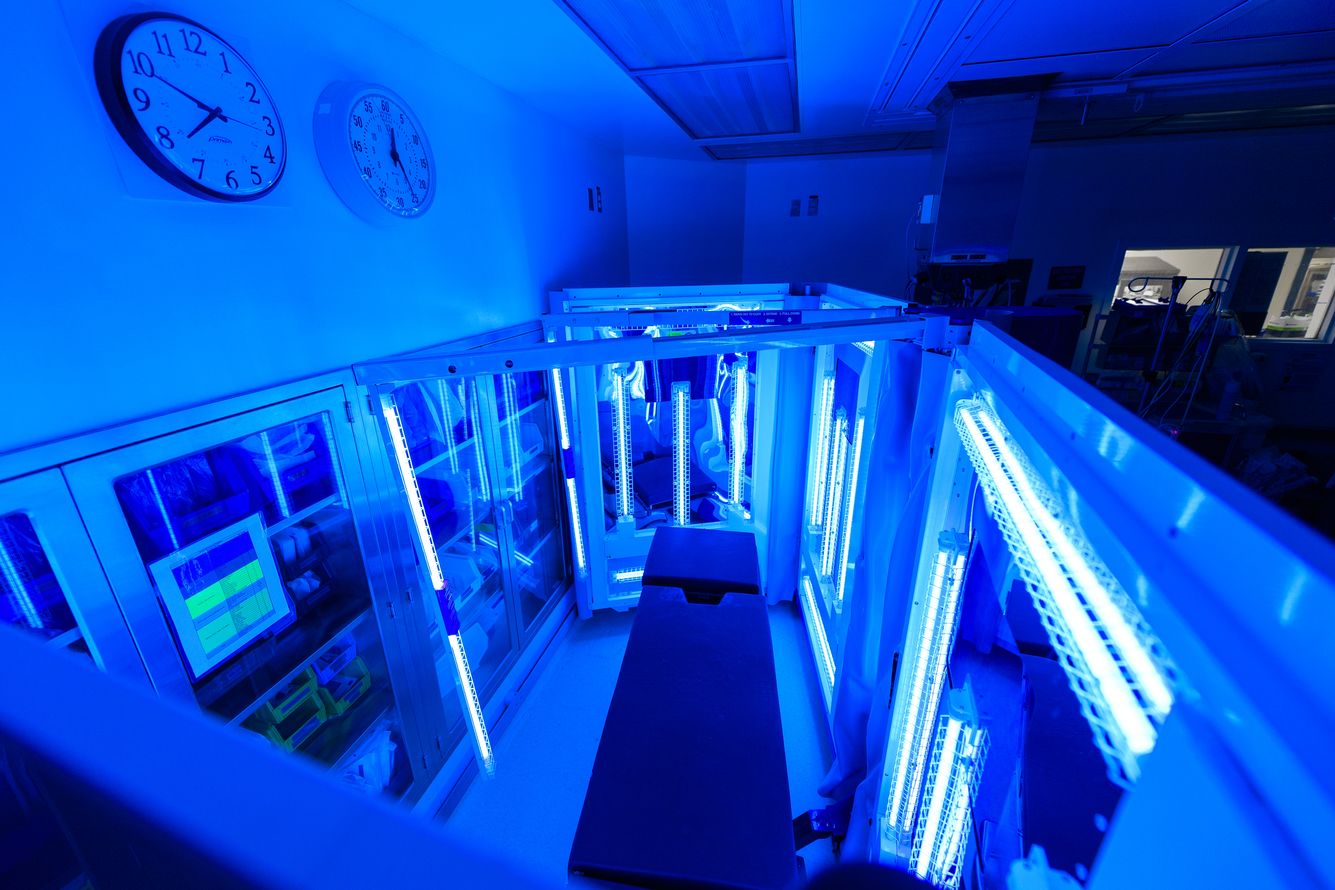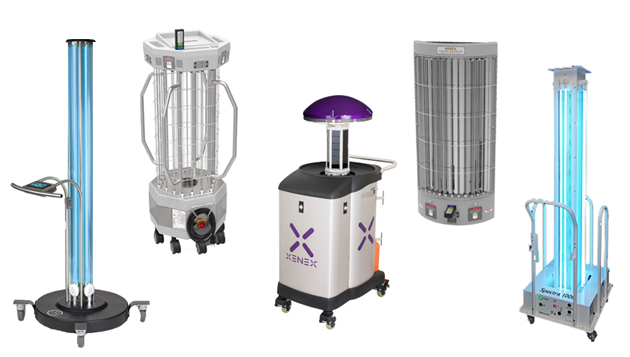Transforming Hygiene Specifications: The Role of UV Surface Disinfection in Health And Wellness
Transforming Hygiene Specifications: The Role of UV Surface Disinfection in Health And Wellness
Blog Article
UV Sanitation: The Cutting-Edge Technology Changing Sanitation Practices
In the realm of sanitation techniques, one modern technology has actually emerged as a game-changer: UV sanitation. From health care settings to food processing, UV sanitation is making its mark in different sectors.
Exactly How UV Sanitation Functions
UV sanitation functions by using ultraviolet light to ruin or inactivate microbes, giving a highly effective and chemical-free method of cleanliness. This modern technology uses the power of short-wavelength UV-C light, which can damaging the DNA and RNA of bacteria, thus providing them not able to duplicate and create damage.
The process starts with the installation of UV disinfection systems, which include UV lamps that release UV-C light. These lamps are strategically positioned in areas where microbial contamination is a problem, such as water therapy plants, health centers, laboratories, and food processing centers.
When bacteria are revealed to UV-C light, the photons permeate their cell wall surfaces and get to the DNA and RNA within. The high-energy UV-C photons interfere with the hereditary material by producing bonds between surrounding nucleotides, resulting in the development of thymine dimers. These dimers avoid the microbes from duplicating, providing them harmless.
UV disinfection is highly reliable versus a large range of bacteria, including germs, viruses, and parasites. It is especially effective against waterborne pathogens like E. coli, Giardia, and Cryptosporidium. Additionally, UV disinfection is a chemical-free method, eliminating the need for possibly damaging disinfectants and minimizing the danger of harmful disinfection byproducts.
Benefits of UV Sanitation
UV disinfection offers countless advantages in the field of sanitation, making it a highly liked approach for effectively eliminating hazardous microorganisms. Among the crucial advantages of UV sanitation is its capability to give a chemical-free remedy. Unlike traditional disinfection methods that count on chemicals, UV sanitation uses ultraviolet light to ruin the DNA of microorganisms, rendering them not able to duplicate and create infections. This not only gets rid of the demand for potentially dangerous chemicals yet also minimizes the risk of chemical deposit on surfaces.

UV sanitation is also extremely flexible in its applications. It can be used in different setups, including medical facilities, colleges, food processing centers, and water treatment plants. UV disinfection systems can be quickly incorporated right into existing cleanliness techniques, supplying an added layer of protection versus infectious diseases.
Along with its performance and versatility, UV sanitation is also eco-friendly. It does not create any kind of harmful by-products or deposits, making it a sustainable and secure technique for cleanliness - uv surface disinfection. UV sanitation requires very little upkeep and has a lengthy life expectancy, resulting in cost savings in the lengthy run.
UV Disinfection in Medical Care Setups
In healthcare setups, UV disinfection has emerged as a cutting-edge technique for efficiently removing hazardous microbes. Making use of UV light to disinfect surface areas and tools has acquired appeal due to its capacity to provide an added layer of defense versus microorganisms. UV disinfection functions by discharging ultraviolet light at a certain wavelength that is deadly to microorganisms, viruses, and various other microorganisms. This technology provides numerous advantages in health care settings.
To start with, UV sanitation is a non-chemical approach, making it an eco-friendly alternative contrasted to conventional sanitation approaches that commonly include the usage of severe chemicals. The usage of UV light eliminates the demand for chemical disinfectants, lowering the risk of harmful residue or chemical direct exposure to both clients and health care employees.
In addition, UV disinfection is highly reliable in eliminating a wide variety of microbes, consisting of drug-resistant germs such as MRSA and view it now C. difficile. It provides a consistent and trusted sanitation procedure, making sure that all surface areas and equipment are thoroughly disinfected, also in hard-to-reach locations.

UV Disinfection in Food Handling
The application of UV sanitation prolongs past health care settings and finds substantial value in the world of food handling. uv surface disinfection. UV sanitation innovation is coming to be significantly prominent in the food market due to its capability to effectively get rid of hazardous virus and improve food safety
One of the primary advantages of UV disinfection in food processing is its capacity to target a large range of microbes, including molds, bacteria, and viruses. By utilizing UV light at certain wavelengths, it is feasible to interrupt the DNA and RNA of these virus, rendering them not able to trigger or replicate damage. This innovation can be applied to numerous stages of the food handling chain, consisting of surface area disinfection, equipment sanitation, and water treatment.
UV sanitation gives a non-thermal and chemical-free approach of disinfecting foodstuff. Unlike typical sanitation methods that depend on chemicals or warmth, UV technology does not leave any type of residue or modify the taste, structure, or dietary value of the food. This makes it an excellent service for markets that need stringent adherence to quality standards.
Additionally, UV sanitation systems are easy to run and set up, needing very little upkeep. They can be integrated right into existing handling lines without triggering considerable disturbances to the manufacturing process. Additionally, UV systems have a fast treatment time, permitting continual processing and minimizing downtime.
The Future of UV Disinfection

One location where UV sanitation is anticipated to make considerable innovations remains in the area of healthcare. With the increase of antibiotic-resistant microorganisms and the requirement for extra effective disinfection techniques, UV light has the prospective to play a vital duty in decreasing healthcare-associated infections. UV disinfection systems can be click here to find out more utilized to decontaminate surfaces, tools, and even the air in health care facilities, helping to stop the spread of unsafe virus and improve patient safety and security.
An additional sector that might take advantage of improvements in UV sanitation modern technology is the food industry. UV light has actually already proven to be an effective approach for decontaminating food and minimizing the risk of foodborne illnesses. As modern technology enhances, we can anticipate to see more economical and reliable UV sanitation systems being executed in food processing plants, ensuring that the food we consume is safe and without hazardous germs.
Verdict
Finally, UV sanitation is an innovative innovation that is changing cleanliness practices in medical care setups and food processing. By making use of UV light to kill or shut down microorganisms, it supplies various benefits such as safety and security, performance, and effectiveness. With recurring improvements in this area, UV sanitation holds terrific prospective for the future of hygiene, giving a trustworthy and lasting option for preserving clean and hygienic atmospheres.
UV disinfection is a chemical-free technique, eliminating the need look here for possibly dangerous disinfectants and lowering the danger of damaging disinfection byproducts.
Unlike conventional disinfection methods that count on chemicals, UV sanitation uses ultraviolet light to ruin the DNA of bacteria, providing them not able to reproduce and cause infections. Unlike conventional sanitation methods that rely on chemicals or heat, UV modern technology does not leave any type of deposit or modify the taste, structure, or nutritional worth of the food. As innovation improves, we can expect to see more affordable and effective UV disinfection systems being implemented in food processing plants, guaranteeing that the food we take in is secure and free from unsafe germs.
In verdict, UV disinfection is a sophisticated innovation that is changing cleanliness practices in health care setups and food processing.
Report this page